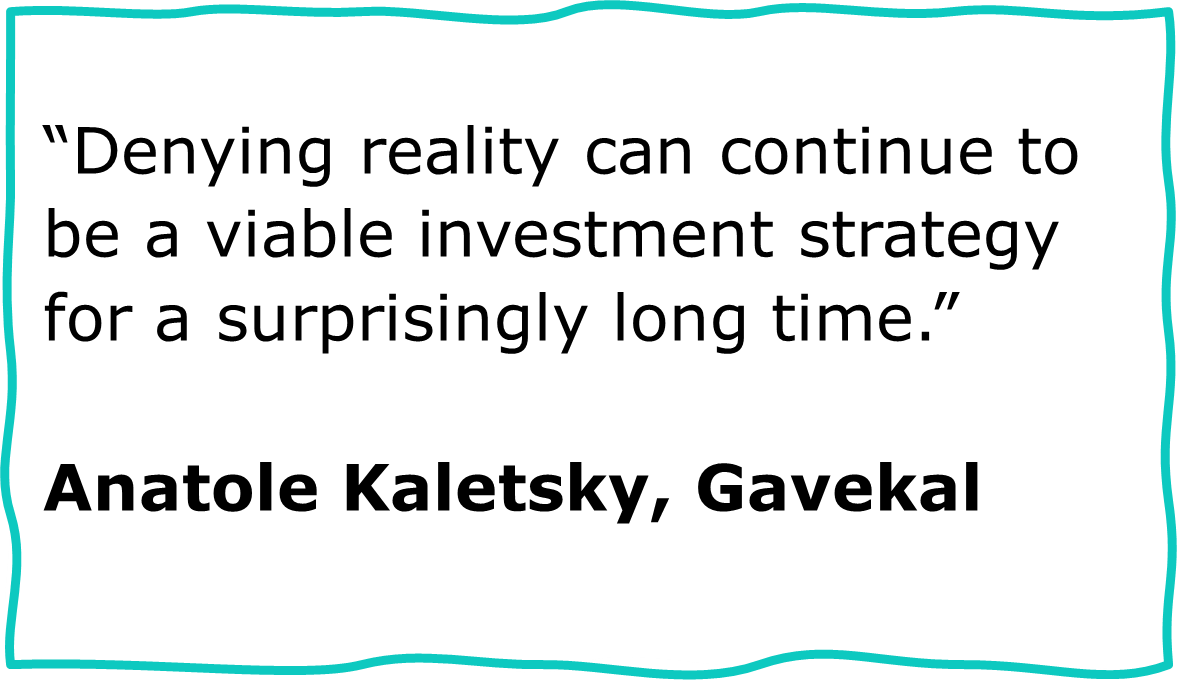 Every week the markets seem to be holding their breath for one set of numbers or another. This week was also notable for an event which has been 34 years in the making – a new peak for Japan’s Nikkei 225 index - and in this there are two messages.
Every week the markets seem to be holding their breath for one set of numbers or another. This week was also notable for an event which has been 34 years in the making – a new peak for Japan’s Nikkei 225 index - and in this there are two messages.
The first message is that this event, this milestone, is absolutely meaningless. Nonetheless it launched a few editorials. According to one in the Telegraph “After 34 years of stagnation” their stock market “is finally waking up to happier times.” But it hasn’t stagnated for 34 years and happier times for investors began 15 years ago at the 2009 low, which we highlighted… in 2009.
The second message is that the bigger the bubble, the greater the crash in values when the bubble bursts, and the longer it will take to recover.
How many times do we have to say it? We are midst a valuation bubble in the US and an investor mania. The bubble is defined by the maths, and the mania is observable from investor behaviour. If you take these as a given, as I do, then you also have to accept that they tell you nothing of when it will burst – there is no magic point when it ends.
This means that investing now is a paradox, and more complex than usual. There might still be a great opportunity to make money despite the US mania and bubble. On the other hand, you might be on the verge of losing 50% of your accumulated life savings. It could be both.
No one knows.
But there are things you can control. For example, if you find yourself being tempted by opportunities in Artificial Intelligence (AI), and can’t resist that temptation, you might want to jump on board a specialist fund knowing three things:
- You are dexterous enough to apply a Stop-Loss if the fund falls by 10%, or some other level with which you are comfortable.
- That you have invested an amount such that if you lose money it will not ruin your life, and…
- …you have not invested so much that you can’t sleep at night.
Put this way you might call your approach “rational speculation”. Nothing wrong with that.
By the way, next week we will update our listing of AI funds and their performances. This blog from last year laid the groundwork, “How To Invest In AI, Best Funds”.
All of the AI excitement has been generated by Nvidia. Last week they announced that they had sold a lot more stuff than expected, and with bigger profits. Big companies and governments are desperately buying Nvidia chips – they don’t know precisely how well they can work for them, but they cannot afford to miss out on the potential. These chips are the equivalent of the picks and shovels in a gold rush. Now those companies and governments have to figure if AI can truly transform the world. Investors also want to know. In particular they will want to know if the potential has been massively over-stated, at least on a timescale to justify the recent shenanigans in their share price, because if that is the case the Nvidia share price will plummet.
This week the key news, though considerably less exciting-cum-stomach churning, was the core US inflation numbers on Thursday. The days before were littered with talk about US inflation staying stubbornly high and even the possibility of interest rates going up, which would really put the cat amongst the manic pigeons. But the numbers were very dull, and the relief was palpable in a range of markets, including the UK.
Yet bond investment specialist Pimco had to admit to a range of unanswered questions – in their words there are “complex and evolving scenarios with many crosscurrents”. This is code for “right now we haven’t a clue”. This kind of honesty is a lot more useful to investors than the dangerous dogma emanating from some quarters.
The sectors and funds which are bouncing (or not!) in this environment are even more interesting than usual. The Hot sectors over the last month contain one big surprise - China. This in turn pulled up more broadly-based emerging market funds. More predictability, the Technology and North American sectors feature, driven by the mania for AI.
As the possibility of very sharp rate cuts in the immediate future has appeared to recede, it is the bonds, property and UK smaller company sectors which dominate the duds. There are almost certainly decent opportunities hidden in this bunch, but you will need to be patient and selective.
China also appeared amongst the Hot funds, but this list is predictably dominated by tech funds and funds very overweight with tech stocks. Although property funds dominate the duds, it is surprising that gold funds are the worst three of the last month – despite the gold price being relatively steady.
Two weeks ago I re-confirmed a target for the S&P 500 of 5083. This was not a prediction, but rather a straightforward textbook calculation. Yesterday the close was 5096, a fraction of 1% higher. For this target to be safely ignored we would like to see the S&P settling above 5160. Using similar analysis, the next target then becomes 5361, 5.2% above the level today.
P.S. For anyone who missed the link a couple of weeks ago, the latest TopFunds Guide, now in its 44th edition, can be downloaded here free of charge.